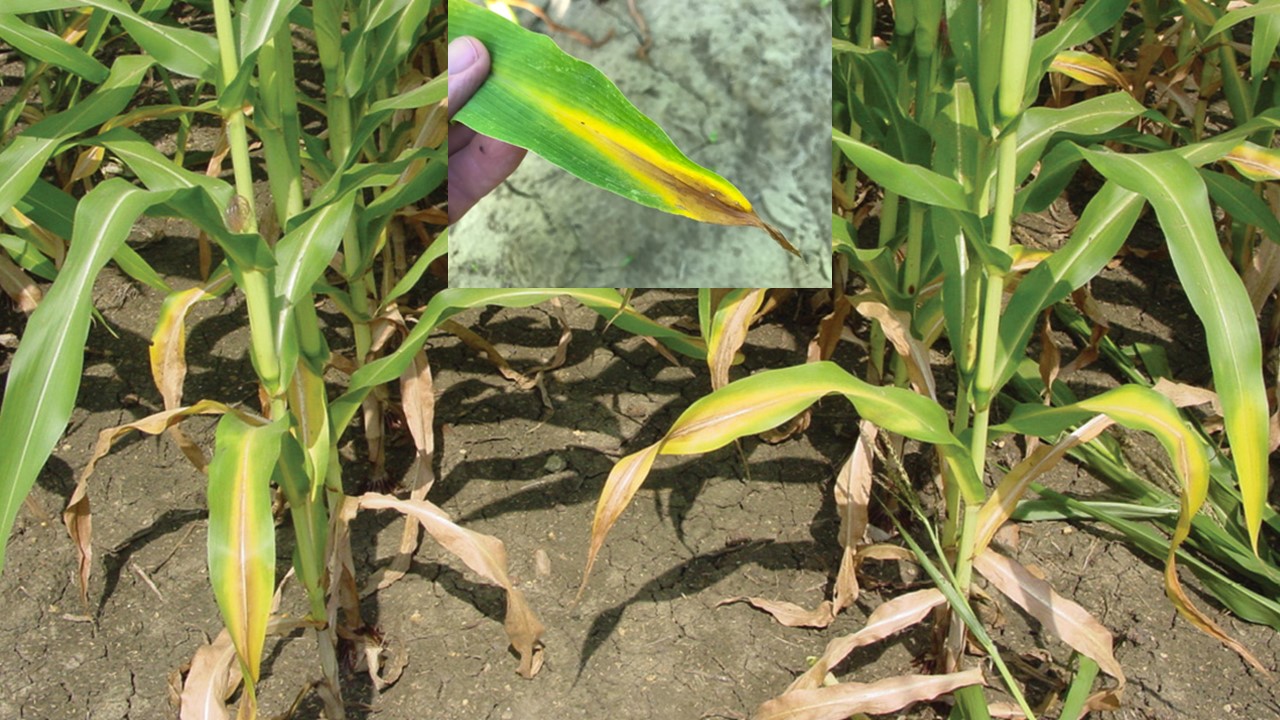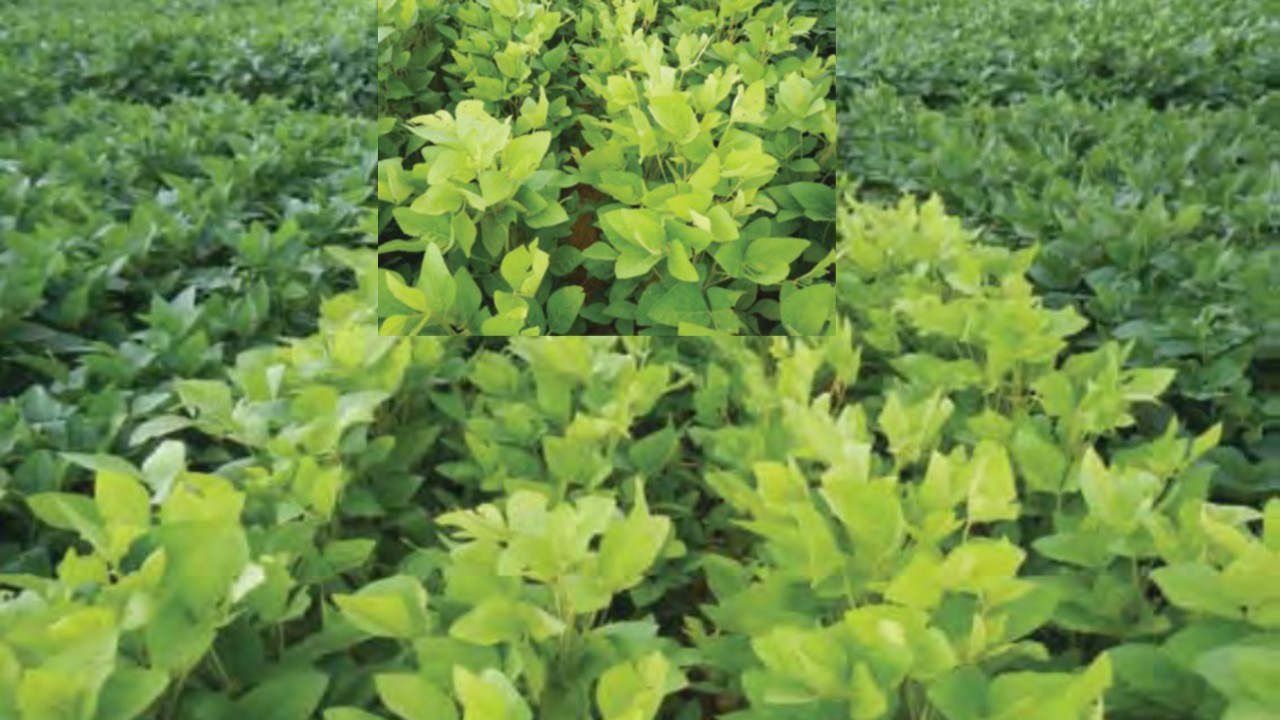This is the first of several installments dealing with commonly observed nutrient deficiencies in corn and soybean. Each week, a new macro or micro nutrient will be posted and discussed. The main objective of this series will be to discuss for each nutrient: (1) visual symptomology of deficiency, (2) plant and leaf tissue deficiency levels, (3) common causes of deficiency, and (4) in-season corrective measures.
Week 1: Nitrogen
Globally, nitrogen is the single most limiting element in terrestrial ecosystems. This is due to plant demand but also to its mobility within the soil profile. While nitrogen in the form of ammonium (NH4+) may be held by 2:1 clay minerals on the soil CEC (cation exchange capacity) for a short time, it is quickly converted to plant available nitrate (NO3–). Since soils have a net negative charge (driven by the CEC) nitrate is unable to adsorb or bind to soil particles and is therefore free to move throughout the soil profile in the soil solution (soil water). This can result in nitrogen loss due to leaching (moving down through the soil profile) and runoff from rain or irrigation events. Nitrogen is also prone to gaseous losses from volatilization and denitrification.
Volatilization of nitrogen occurs when ammonium (NH4+) is converted to ammonia gas (NH3).
Denitrification occurs when nitrate nitrogen (NO3–) is converted to N2, N20, and NO by denitrifying bacteria that then escape into the atmosphere.
Corn
Nitrogen Deficiency Symptomology
Plant – Characterized by stunted plants that are yellowish-green in appearance.
Leaves – Nitrogen is not only mobile in the soil but in plant tissue as well. Symptoms appear on older leaves first as nitrogen is translocated to meristematic tissue to support actively growing or new plant tissue. Symptoms will be “v-shaped” yellowing starting at the leaf tip and progressing down the midrib toward the base of the leaf at the stalk.

Plant and Leaf Tissue Deficiency Levels
Vegetative Stages – Recently mature leaf nitrogen of < 3.0%1
R1/Tassle – Recently mature leaf nitrogen of < 2.8%1
Soybean
Nitrogen Deficiency Symptomology
Plant – Plants will be pale green and not necessarily stunted like corn.
Leaves – Symptoms appear on older leaves first because of the mobility of nitrogen within the plant. Older leaves will begin to turn brown and leaf venation may be prominent.

Plant and Leaf Tissue Deficiency Levels
At-flowering – Leaf tissue N levels of less than 3.25%1
| Common Nitrogen Sources | ||
| Source | Analyses | % Nitrogen |
| Urea | 46 – 0 – 0 | 46 |
| Urea ammonium nitrate | 28 or 32 – 0 – 0 | 28 or 32 |
| Anhydrous ammonia | 82 – 0 – 0 | 82 |
| Ammonium sulfate | 21 – 0 – 0 | 21 |
| Ammonium nitrate | 34 – 0 – 0 | 34 |
| Calcium ammonium nitrate | 27 – 0 – 0 | 27 |
| Common Causes of Deficiency |
| 1. Inadequate amount of fertilizer nitrogen applied. |
| 2. Restricted early-season root growth due to cold soils. |
| 3. Nitrogen loss due to leaching (moving down through the soil profile). |
| 4. Runoff due to a rain or irrigation event. |
| 5. Volatilization and denitrification. |
| In-Season Corrective Measures |
| 1. Side-dress nitrogen application. |
| 2. Fertigation – application of nitrogen via irrigation water. |
1Campbell R.A. 2013. Reference Sufficiency Ranges for Plant Analysis in Southern Region of the United States. Southern Cooperative Series Bulletin #394. North Carolina Department of Agriculture and Consumer Services Agronomic Division, Raleigh, NC.
Additional Helpful Resources
Visual Symptoms: A Handy Tool in Identifying Nutrient Deficiency in Corn, Cotton, and Soybean
Tennessee Soybean Production Handbook Chapter 5: Soil Fertility and Nutrient Management in Soybean

